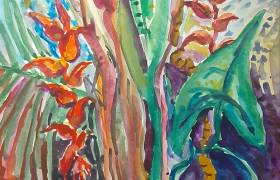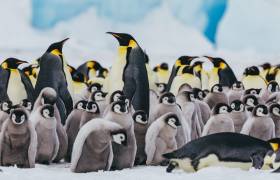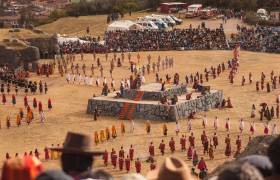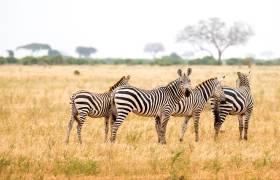Our minds swiftly turn to new adventures on the horizon when the new year is fast approaching. And with incredible trips that span across seven continents – you’re spoilt for choice on where to go next with Exodus. So how do you choose? From January to March there are great opportunities to visit some of the world’s most spectacular natural wonders at their peak. From the Perito Moreno Glacier to the mighty Victoria Falls, here are six natural wonders that are best to visit during the first couple of months of the year.
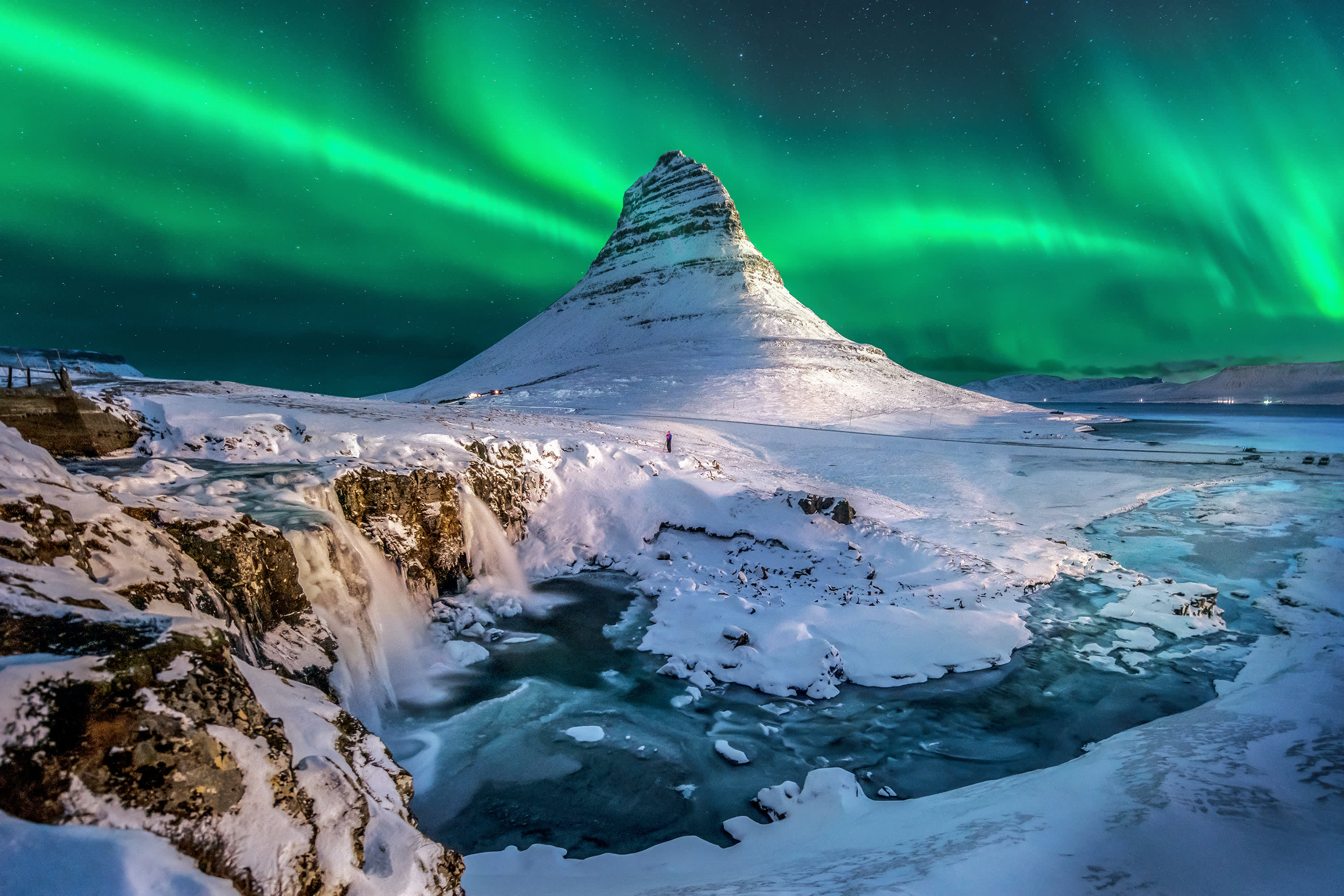
1. Chase the Northern Lights
Best time to visit: January to March
Some of us may have been lucky over the past few months and spotted the Northern Lights right outside our front doors in the UK – and there’s a reason for that – it’s because the sun is at the peak of its 11-year activity cycle! But there’s nothing quite like experiencing the aurora in the snow-covered Nordic regions. Few natural wonders out there match the surreal beauty of the Northern Lights, and from January to March, you’ll have heightened chances of spotting swirls of green, purple and pink ribbons across Iceland, Finland and Sweden. Why? One of the main reasons is that the winter season brings extended hours of darkness and clearer skies which offer more opportunities and better visibility for spotting the aurora.
So why not consider booking our Iceland Northern Lights trip? For a couple of nights, you’ll be staying outside the small village of Kirkjubaejarklaustur, where there’s little light pollution offering ideal conditions for you to go Northern Light hunting in the evenings. This action-packed adventure also takes you on a glacial walk across Skeidararsandur, and a tour of the Golden Circle, which includes a visit to the Gulfoss Waterfall, the Geysir geothermal area and Thingvellir National Park.
On our Finnish Wilderness Week, you’ll stay in Basecamp Oulanka in the heart of Oulanka National Park and enjoy a nighttime snowshoeing excursion where there are optimum chances of seeing the Northern Lights. For families, our Finland Family Winter Adventure also stays at Basecamp Oulanka, where your kids can build snow forts, go dog sledding and keep their eyes peeled for the Northern Lights. If you’re keen on heading to Sweden, our Arctic Circle Aurora Adventure takes you out on a two-day wilderness expedition on forest skis. On one evening, you’ll stay in a remote log cabin, where you could have a front-row seat to the celestial show. The rest of the trip will be spent in Rajamaa, a complex of cosy wooden chalets.

2. Visit Victoria Falls at peak flow
Best time to visit: February to March
If you’re looking to see Victoria Falls at its most impressive – the months of February and March might be the best time to go. Standing at an incredible 330ft high and stretching 5,580ft wide, it’s the largest waterfall in the world, and when the Zambezi River swells to full force, Victoria Falls turns into one of nature’s most powerful displays.
Known locally as “Mosi-oa-Tunya” (The Smoke That Thunders), it’s estimated that at its highest flow, there are 500 million litres of water crashing over the edge every minute! So, there’s no better time to marvel at this force of nature and feel the spray on your face from the observing platforms. On our adventures, you can experience this waterfall from the Zimbabwean side on our Cape Town to Victoria Falls trip or enjoy the ultimate birds-eye view with an optional scenic flight on our Victoria Falls to Cape Town Camping trip.

3. Watch the Perito Moreno Glacier calve in Argentina
Best time to visit: January to March
If you’re looking to see one of nature’s most dramatic spectacles in 2025, then we’d recommend heading to Patagonia in Argentina at the beginning of the year. In Los Glaciares National Park lies the towering cobalt-blue Perito Moreno Glacier. This isn’t your average glacier, it’s particularly special as it’s one of the few in the world that is still constantly advancing, despite climate change. During the summer, temperatures begin to climb which means visitors in January to March are more likely to see calving events, where large ice sheets break off the glacier and crash into Lago Argentino.
On day five of our Patagonian Highlights trip, you can see this phenomenon for yourself from the observation deck walkway. If you’d like a closer look, you can book an optional boat trip across Lago Argentino. Or combine some panoramic trekking routes across Torres del Paine National Park and El Chalten with a visit to Perito Moreno Glacier, on our Classic Patagonia Treks.

4. See Japan in full bloom
Best time to visit: Mid-March and onwards
Spring, one of nature’s most fleeting seasons, transforms major cities and countryside across the world with trees in full bloom and blankets of pink confetti lining the streets and parks. But no destination can really rival how Japan celebrates the beginning of spring.
The “Sakura Season”, is one of Japan’s most beloved natural events – with official government websites even tracking the blossom’s arrival in key cities across the country. Blossom usually begins to show in Okinawa by mid-March and spreads across Japan covering landscapes, riverbanks and temple gardens with pink and white petals. During this time of year, locals and visitors hold hanami (flower-viewing) celebrations, where groups of family and friends have picnics under the cherry trees. Food stalls in Osaka Castle Park, Nara Park and others sell spring-themed delicacies like Sakura mochi wrapped in pickled Sakura leaf, Sakura-flavoured sake and chocolate truffles with Sakura extract.
We have special Sakura Season departures that are ideal for those who want to catch Japan’s famous flowers in full bloom. On our Ancient and Modern Japan trip, you’ll visit key Sakura-blooming places like the Golden Pavilion in Kyoto and Nara Park, where you’ll see sacred deer walking under the Sakura-framed temples. While on our Highlights of Japan adventure, visits to the Senso-ji Temple in Tokyo and the Himeji Castle offer brilliant photo opportunities of the cherry blossoms.

5. Head to the Himalaya
Best time to visit: February to March
When it comes to natural wonders – nothing beats casting your eyes on the world’s tallest mountain – Mount Everest. So, if you’re looking for a rewarding trek to book at the beginning of next year, the Himalaya is an excellent choice. Although it’s the low season and it’s colder this time of year, wintertime in this region brings crystal-clear, blue skies and excellent visibility, so you can enjoy uninterrupted views of snow-capped peaks. If you’re looking to skip the heat and humidity of other seasons, the air is fresh and crisp in wintertime. There are also fewer crowds on the trails this time of year too. Daytime temperatures at lower elevations in the Himalayas are generally cool and pleasant, ranging from 10 to 15°C, which are ideal trekking conditions, while higher elevations are chiller ranging between -5 to 15°C – so definitely pack a lot of thermals!
On our Everest Base Camp Trek, you’ll enjoy excellent visibility of iconic viewpoints like Kala Patthar and other famous peaks including Lhotse, Dablam and Nuptse, which you may not always get in other months of the year. Our Annapurna Circuit trip is great to do in March, as it’s towards the end of winter when temperatures are milder and the scenery is vibrant. Rhododendrons start to bloom, which adds splashes of colour to the forests. In lower elevations, routes to Poon Hill are also easily accessible and offer spectacular panoramic views. The Darjeeling, Sikkim & the Singalila Ridge is another good choice for March before the trekking season really kicks off in April and May – the weather is clear, temperatures are milder and colourful wildflowers are blooming along the trails.

6. Kayak on calm waters in Ha Long Bay
Best time to visit: January, February and March
The first couple of months in the year, Vietnam has pleasant, dry weather and mild temperatures, making it an ideal time to visit. Temperatures can range from 15–20°C, offering cool but comfortable days that are perfect for hiking, exploring caves and kayaking, and we believe, one of the best places in the world to go kayaking is Ha Long Bay. This renowned natural wonder is home to over 1,600 limestone islets and islands, which rise dramatically from the water, making this UNESCO World Heritage Site a must-see. In the months of January, February and March, the weather is stable, with significantly less rainfall and lighter winds which makes the sea calmer, offering ideal conditions for kayaking. On winter mornings, Ha Long Bay is often misty which creates an almost ethereal experience on the water.
On day three of our Vietnam Adventure you’ll get to spend some quality time touring Ha Long Bay in style on a traditional junk sailing boat, where you’ll have a seafood lunch on deck and get the chance to go on an optional kayaking excursion. Other notable highlights include visits to Hue’s imperial citadel, a tour of Hoi An’s ancient town and an overnight stay at a guesthouse on the Mekong Delta. For avid cyclists, our Cycling Vietnam trip also includes a cruise and kayaking excursion across Ha Long Bay after an overnight train and transfer from Hanoi. This trip offers a visit to the Me Cung Caves and extra time cruising the islands of Ha Long Bay the following day too.
Take a look at our natural wonders collection.

